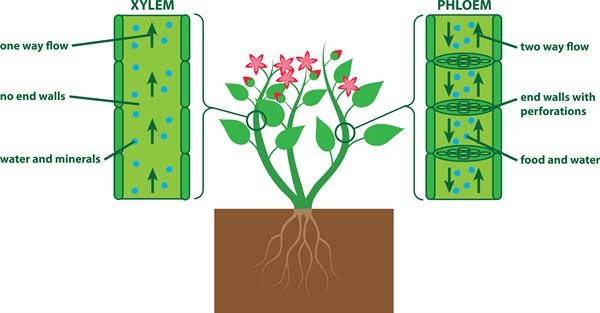
PUMPA - SMART LEARNING
எங்கள் ஆசிரியர்களுடன் 1-ஆன்-1 ஆலோசனை நேரத்தைப் பெறுங்கள். டாப்பர் ஆவதற்கு நாங்கள் பயிற்சி அளிப்போம்
Book Free DemoFood is the source of energy. The roots of the plants absorb the water and minerals found in the soil. These are transported to the leaves of the plants as the leaves prepare food using carbon dioxide, sunlight and water through the process of photosynthesis.
Transportation of Water and Minerals
The plants take up the water and mineral from the soil with the help of their roots. The roots have hair like structures known as root hairs on them. These root hairs increase the surface area of the root so that more amount of water and minerals are absorbed. These root hairs are in contact with the water that is found between the soil particles.
The water and minerals that are absorbed by the roots is transported to the other parts of the plant by pipe-like vessels which are made of special tissue known as the vascular tissue.
A group of cells that form a specialized function in an organism is known as tissue.
The vascular tissue found in the plants is of two types based on their function. They are as follows:
Xylem:
The vascular tissue that is involved in the transport of water and nutrients in plants is known as xylem. These tissues form a network of continuous channels to connect the roots and leave via the branches of the stem so that water is transported throughout the plant. It is a unidirectional transport.

Phloem:
The vascular tissue that transports the food produced by the leaves to all the parts of the plant is known as phloem. It is a bidirectional transport.
Transpiration
Not all the water that is absorbed by the roots of the plant is utilized by it. Hence, the excess water should be eliminated. This excess water evaporates through the stomata that is present on the surface of the leaves by the process known as transpiration.
Transpiration helps in the absorption of water from the roots as the evaporation of water from the leaves generates a suction pull which brings the water upwards from the roots.
The evaporation of water from the leaves utilizes the heat of the plant and cools it. Thus transpiration also helps in cooling down the plants.
The evaporation of water from the leaves utilizes the heat of the plant and cools it. Thus transpiration also helps in cooling down the plants.